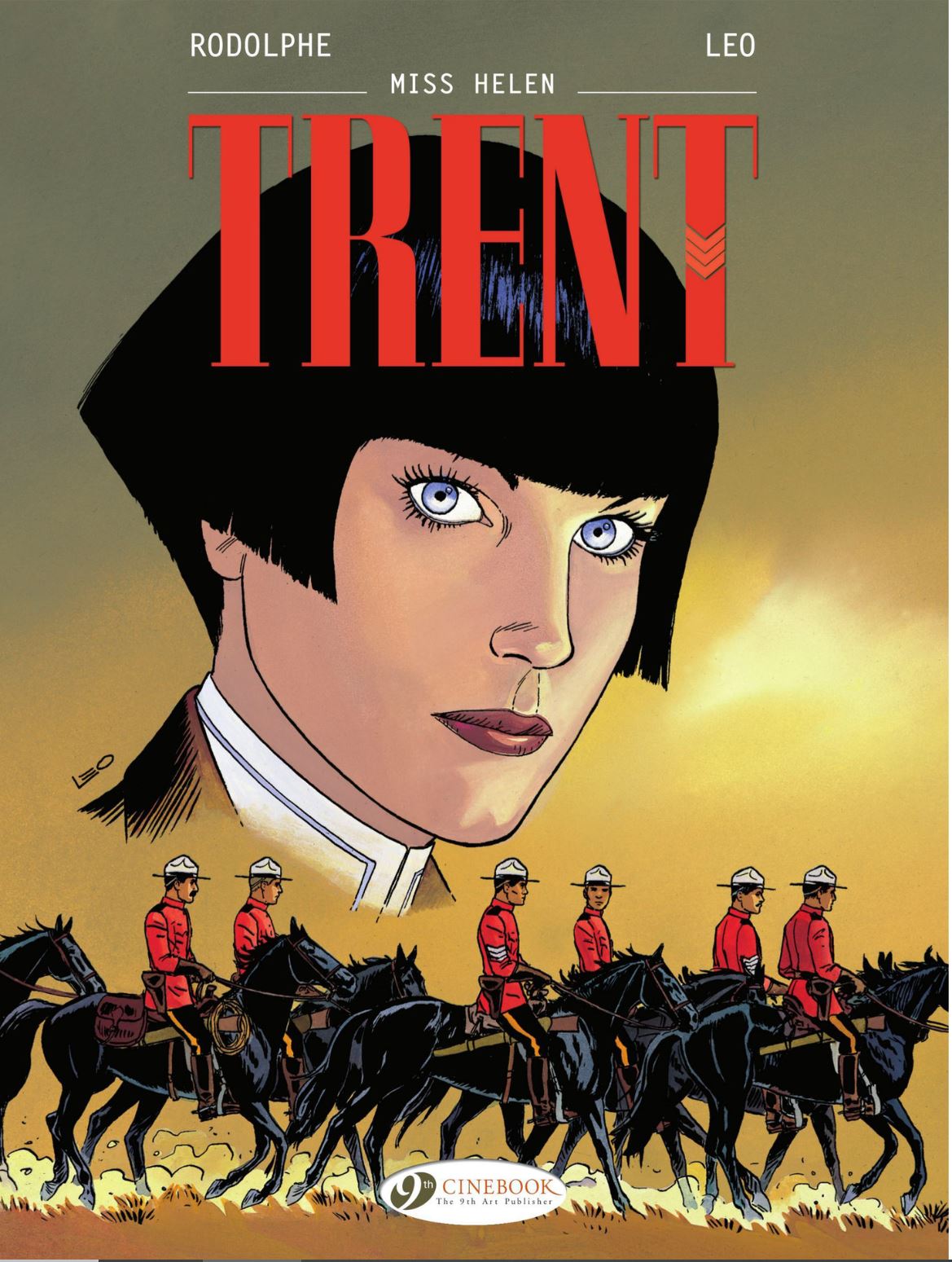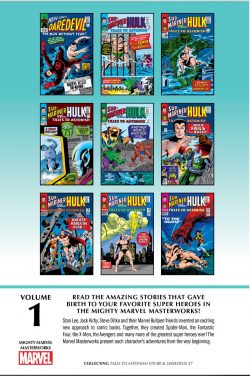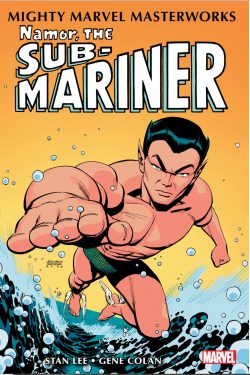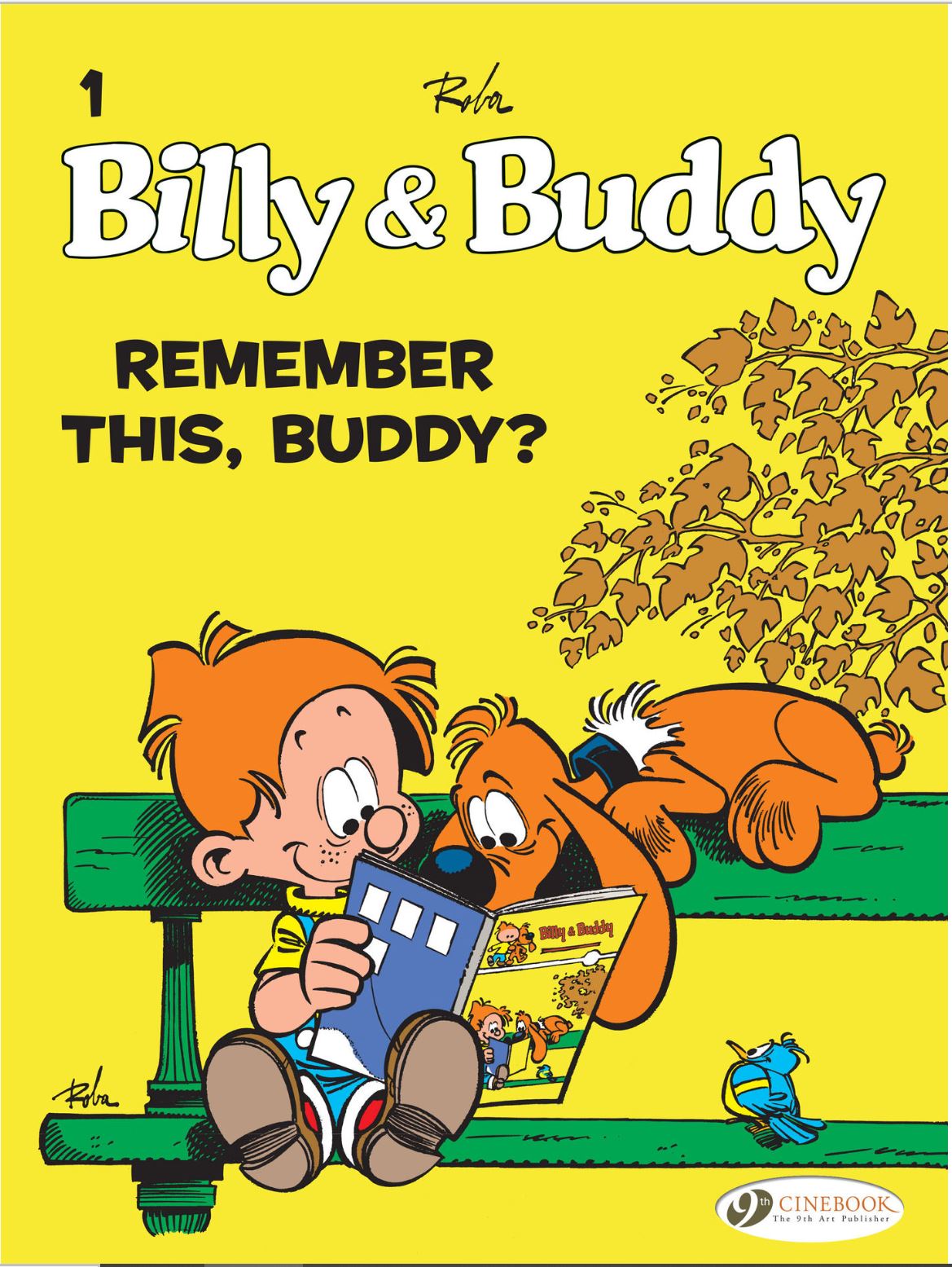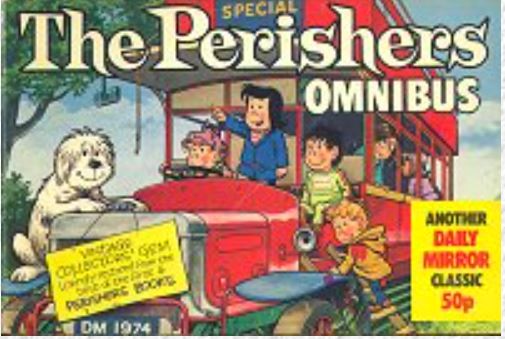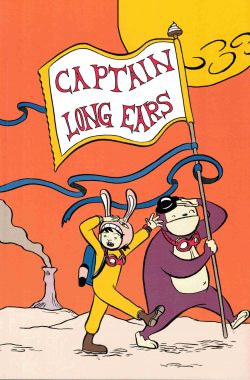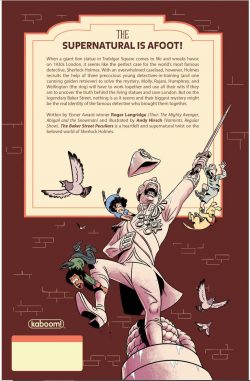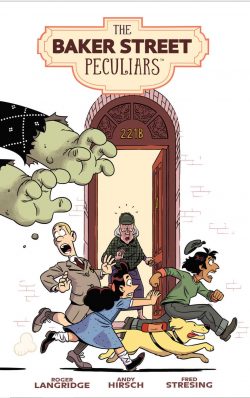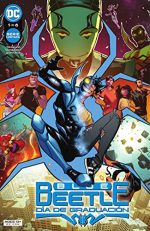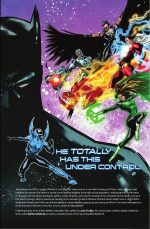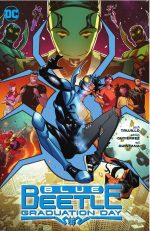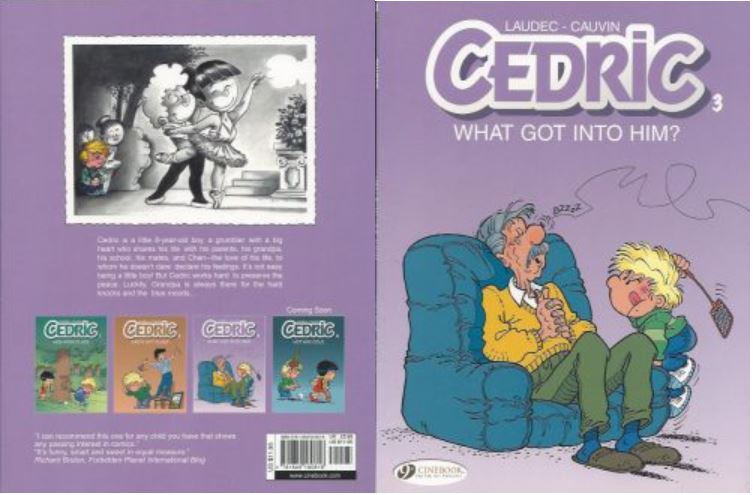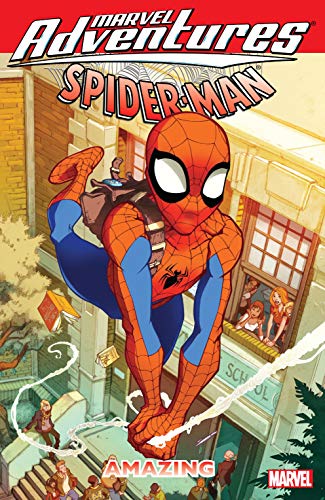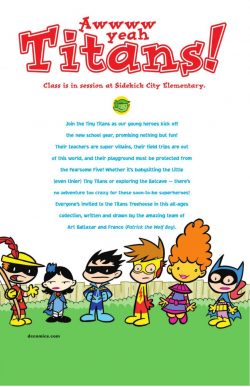
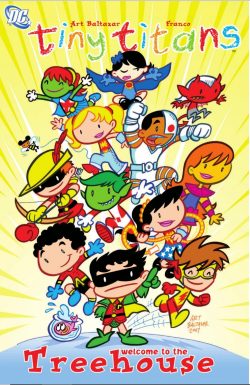
By Art Baltazar & Franco (DC Comics)
ISBN: 978-1-4012-2207-5 (TPB/Digital edition)
The links between animated features and comic books are long established and, for young consumers, indistinguishable. After all, it’s just entertainment in the end…
For quite some time at the beginning of this century, DC’s Cartoon Network imprint was arguably the last bastion of children’s comics in America and worked to consolidate that link between TV and 2D fun and thrills with stunning interpretations of such television landmarks as Ben 10, Scooby Doo, Powerpuff Girls, Dexter’s Laboratory and so many other screen gems.
The kids’ comics line also produced some truly exceptional material based on TV iterations of the publisher’s proprietary characters such as Legion of Super Heroes, Batman: Brave and the Bold and Krypto the Super Dog as well as material like Billy Batson and the Magic of Shazam! which was merely similar in tone and content. Perhaps the line’s finest release was a series ostensibly aimed at early-readers but which quickly became a firm favourite of older fans and a multi-award winner too.
Superbly mirroring the magical wonderland inside a child’s head where everything is happily all smooshed up together, Tiny Titans became a sublime antidote to continuity cops and slavish fan-boy quibbling (all together now: “… erm, uh… I think you’ll find that in…”) by reducing the vast cast of the Teen Titans Go! animated series, the far greater boutique of the mainstream comics – and eventually the entire DC Universe continuity – to little kids and their parents/guardians in a wholesome kindergarten environment.
It’s a scenario spring-loaded with multi-layered in-jokes, sight-gags and the beloved yet gently mocked trappings and paraphernalia generations of strip readers and screen-watchers can never forget…
Collecting issues #1-6 (cover-dated April to September 2008) of a magically madcap, infinitely addictive all-ages mini-masterpiece, this debut volume begins after an as-standard identifying roll-call page at ‘Sidekick City Elementary’ where new Principal Mr. Slade is revealed to be not only Deathstroke the Terminator but also poor little Rose’s dad! How embarrassing…
Art Baltazar and co-creator Franco (Aureliani) pioneered and mastered a witty, bemusingly gentle manner of storytelling that just happily rolls along, with the assorted characters getting by, trying to make sense of the great big world while having “Adventures in Awesomeness”. A primal example is Beast Boy getting a new pet and becoming ‘Man’s Dog’s Best Friend’…
The method generally involves stringing together smaller incidents and moments into an overarching themed portmanteau tale… and it works astoundingly well.
Back in class Robin and Kid Flash tease a fellow student in ‘Speedy Quiz’ whilst ‘Meanwhile in Titans Tower’ (the treehouse of the title) finds Wonder Girl, Bumblebee, Raven and Starfire discussing whether to let Batgirl Barbara Gordon join their circle…
Later everyone meets up and helps scary blob Plasmus cope with an ice cream crisis but shocks still abound at school. Raven’s dad is an antlered crimson devil from another universe, but his most upsetting aspect is as the new substitute teacher!
Happily, however, at the treehouse the kids can forget their worries, as Wonder Girl Cassie’s new casual look – after initial resistance – wins many admirers among the boys…
The original comics were filled with activity pages, puzzles and pin-ups, so ‘Help Best Boy Find his Puppy Friend!’ and awesome group-shot ‘Awwwww Yeah Titans!!!’ offers an arty interlude before shenanigans resume with ‘Ow’ as new girl Terra persists in throwing rocks at the boys yet knows just how to make friends with the girls…
Not so much for the little lads though: they’ve got into another confrontation with mean kids Fearsome Five. Apparently the only way to determine who wins is to keep ‘Just a-Swingin’ – and ignore those bullies…
After teeny-weeny Little Teen Titan Kid Devil finds a delicious new way to use his heat power, Beast Boy becomes besotted by Terra in ‘Shadows of Love’, even though his obvious affection makes him act like an animal. While ‘Easy Bake Cyborg’ saves the day at snack time, the lovesick green kid follows some foolish advice and transforms into a ‘Beast Boy of Steel’…
At least Kid Devil is making friends, providing ‘Charbroiled Goodness’ for a local food vendor, just as the Fearsome Five show up again…
Following a pin-up of the bad kids and a brainteaser to ‘Match the Tiny Titans to their Action Accessories!’, a new school day finds science teacher Doctor Light losing control in ‘Zoology 101’ thanks to Beast Boy’s quick changes, after which ‘Sidekick’s Superheroes’ debate status and origins whilst Rose’s ‘Li’l Bro Jericho’ causes chaos and closes the school for the day.
When Robin brings some pals home, Alfred the Butler is reluctant to let them check out the ‘Batcave Action Playset’. He should have listened to his misgivings: that way there wouldn’t be so much mess or so many penguins…
After Aqualad’s suggestion ‘Let’s Play: Find Fluffy!’ the Boy Wonder has the strangest day, starting with ‘Robin and the Robins’ and culminating in a new costume. Before that though, you can see ‘Beast Boy at the Dentist’, Wonder Girl enduring a ‘Babysittin’ Baby Makeover’, meet ‘Beast Boy’s Prize’ and experience hair gone wild in ‘Do the “Do”’. Eventually, however, ‘It’s a Nightwing Thing’: revisiting the exotic yesteryears of disco mania as new outfits debut to mixed reviews and reactions…
Once done testing your skill with the ‘Tiny Titans Match Game!’ and admiring a ‘Little Tiny Titans Bonus Pin-up’ there are big thrills in store when ‘Playground Invaders’ introduces annoying Titans from the East side of the communal games…
Sadly, Fearsome Five are still around to tease the former Robin in ‘Nightwing on Rye’ even whilst ongoing epic ‘Enigma and Speedy’ sees the Boy Bowman trapped in a very one-sided battle of wits with the Riddler’s daughter…
Robin’s costume crises continue to confuse in ‘May We Take a Bat-Message?’, resulting in a kid capitulation and ‘Back to Basics’ approach to the old look, after which ‘Tiny Titans Joke Time!’ and a ‘Tiny Titans East Bonus Pin-up’ segues neatly into ‘Meet Ya, Greet Ya’ with newcomers Supergirl and Blue Beetle turning up just ahead of a host of wannabee Titans (Power Boy, Zatara, Vulcan Jr., Hawk & Dove, Li’l Barda and Lagoon Boy)…
With the riotous regulars away camping, Raven opens her eyes to a potential daybreak disaster as ‘Home with the Trigons’ finds her dressed by her dad for a change. Meanwhile, ‘Let’s Do Lunch’ finds Blue Beetle losing a very public argument with his backpack, and after the kids bring their super-animal pals in, everything goes horribly wrong. At least they decide that the “First Rule of Pet Club is: We Don’t Talk About Pet Club”…
This insanely addictive initial collection wraps up with visual and word puzzles ‘How Many Beast Boy Alpacas Can You Count?’ and ‘Blue Beetle Backpack Language Translation!’, a huge and inclusive Pin-up of ‘The Tiny Titans of Sidekick City Elementary’ and a hilarious ‘Tiny Titans “Growth Chart” …
Despite ostensibly being aimed at super-juniors and TV kids, these wonderful, wacky yarns – which marvellously marry the heart and spirit of such classic strips as The Perishers or Peanuts with something uniquely mired and marinated in pure American comic-bookery – are outrageously unforgettable yarns and gags no self-respecting fun-fan should miss: accessible, entertaining, and wickedly intoxicating.
© 2008, 2009 DC Comics. All Rights Reserved.

